Identifying key priorities and structuring an emergent, child centred virtual learning space to continue play-based learning for children 3 and 4 years of age
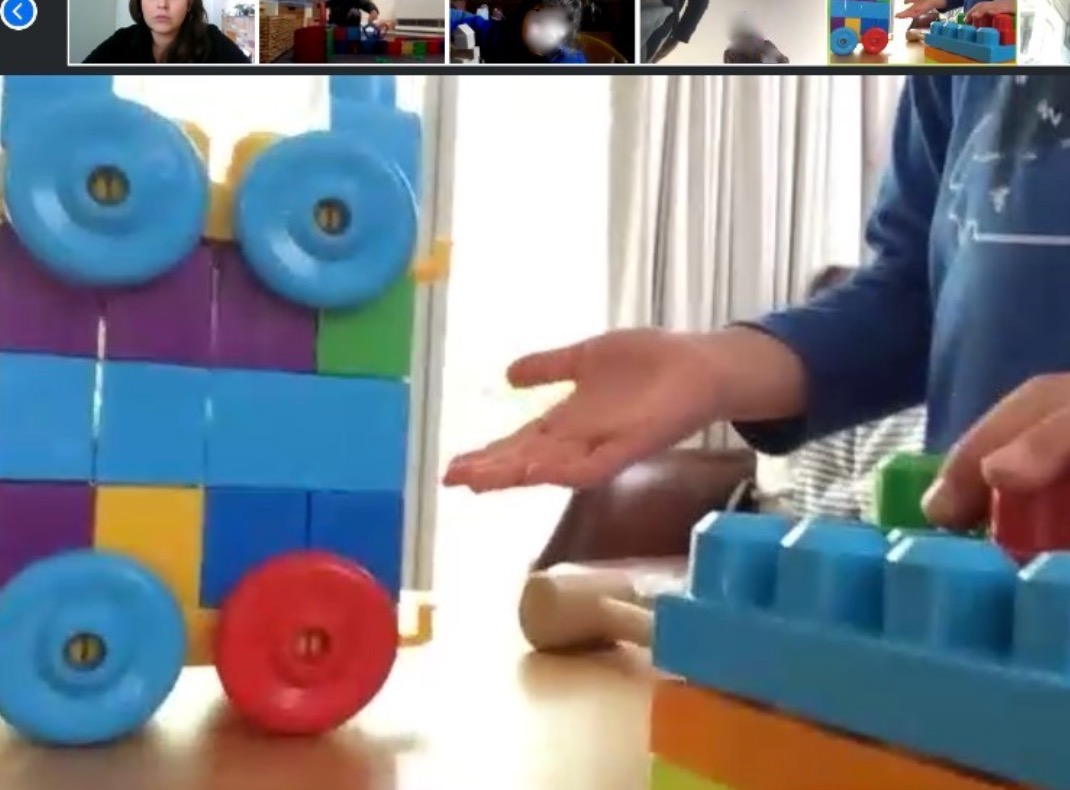
“Over a short time, this became a collaborative experience and children began engaging with each other as researchers, asking questions and offering solutions and reflections.”
What a challenge! How do we continue an immersive, emergent, play based curriculum online with three and four year olds? We watched the nations who had been in lockdown previously and considered our teaching and learning values. These reflections enabled us to create key aims to achieve this. Primarily, we broke it down to three main ideas: maintain authentic connection, continue to build curiosity, and recognise individual learning. Not only were these a consideration for maintaining relationships and building student agency, but it was necessary we prioritise them to continue nurturing learning. We also knew that to achieve these key ideas, we needed to engage both the children and their families.
In designing our programme, we thoughtfully considered the structure of our communication, both synchronous and asynchronous, and how best to resource families virtually with information and guidance. We planned 3 synchronous sessions per day; whole class meetings and, to foster child-to-child relationships, and parallel and collaborative play opportunities, smaller group sessions. We ensured that each child had the opportunity to meet in these small groups three times a week. We designed the small group sessions to foster open and flowing play, encouraging children to bring construction materials, toys, drawing or any creative endeavours to these sessions.  We played alongside each other, including the teachers. We watched, we posed questions, we discussed challenges and collaboratively reflected on what we were all doing. Just as we do onsite, we could engage children in expanding their thinking by making transdisciplinary connections, building conversation and learning from one-another. The children engaged with each other as they would onsite, but by seeing one another learning from their homes. Over a short time, this became a collaborative experience and children began engaging with each other as researchers, asking questions and offering solutions and reflections. This engagement supported the educator process of documenting learning and areas of interest, to plan our whole group meeting times and asynchronous experiences. As our programme developed, we were able to build from one session to the next based on the emerging curriculum led by the children. Educators then aligned these experiences with the current unit through the connection of concepts, Approaches to learning (ATL), and curriculum expectations.
We played alongside each other, including the teachers. We watched, we posed questions, we discussed challenges and collaboratively reflected on what we were all doing. Just as we do onsite, we could engage children in expanding their thinking by making transdisciplinary connections, building conversation and learning from one-another. The children engaged with each other as they would onsite, but by seeing one another learning from their homes. Over a short time, this became a collaborative experience and children began engaging with each other as researchers, asking questions and offering solutions and reflections. This engagement supported the educator process of documenting learning and areas of interest, to plan our whole group meeting times and asynchronous experiences. As our programme developed, we were able to build from one session to the next based on the emerging curriculum led by the children. Educators then aligned these experiences with the current unit through the connection of concepts, Approaches to learning (ATL), and curriculum expectations.
“We supported families to recognise that every child will approach a suggested learning experience from a different angle and at a different level, and that the activities were designed to be explored rather than prescribed. “
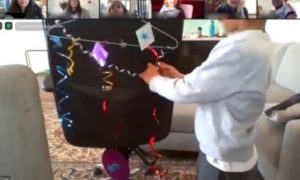 The unit of inquiry during this time was explored through the transdisciplinary theme How the World Works and our central idea was The principles of scientific thinking help us to interpret the world around us. It was an inquiry into:
The unit of inquiry during this time was explored through the transdisciplinary theme How the World Works and our central idea was The principles of scientific thinking help us to interpret the world around us. It was an inquiry into:
- The ways we can think scientifically (observe, analyse, synthesise, hypothesise, evaluate)(Form)
- How scientific thinking changes our perspectives (Perspective)
- How we use scientific thinking to innovate (Change)
We had begun the unit on site prior to going to remote learning and this created a lens to discuss and inquire through. We used this lens in play and through the various explorations we offered in a choice board and as provocations on our digital platform. We modelled the language and the ways in which we can think scientifically in different scenarios. The environment also offered opportunities for us to explore the concepts, as in our own homes we were all definitively experiencing the programme in different ways. We could explore perspective with a real-life experience attached as it was physically clear we were in different places and exploring tasks differently. As children shared their explorations and we discussed our observations and theories, they were able to recognise how things were different and similar. Through our play sessions we could connect the concept of form through our need to explore how our creations could be described and shared via Zoom. Through the unit and remote learning children explored their sense of agency in how they shared their own discoveries and extended learning with their family, which extended into their play. As educators we could explore children’s thinking, support their skill development and witness the ways in which the programme was developing their scientific thinking. We were delighted to see these skills displayed once we returned back on site.
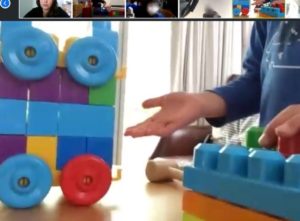 To further propel this learning process, we asked families to post photos, work samples, videos and experiences to our shared learning platform. We prioritised engaging with these posts so that our responses could be as close to real time as possible, thus creating a consistent feedback and extension cycle. This allowed families to be guided in how to meaningfully scaffold learning at the time it was occurring. In addition, we published a weekly choice board of provocations and possible learning explorations. These were informed by documentation and linked directly to key ATLs, unit understandings, and the children’s emerging interests reflecting what they wished to learn about. We encouraged families to use this choice board as a buffet, they could engage with the options in a flexible way that suited their family. We supported families to recognise that every child will approach a suggested learning experience from a different angle and at a different level, and that the activities were designed to be explored rather than prescribed.
To further propel this learning process, we asked families to post photos, work samples, videos and experiences to our shared learning platform. We prioritised engaging with these posts so that our responses could be as close to real time as possible, thus creating a consistent feedback and extension cycle. This allowed families to be guided in how to meaningfully scaffold learning at the time it was occurring. In addition, we published a weekly choice board of provocations and possible learning explorations. These were informed by documentation and linked directly to key ATLs, unit understandings, and the children’s emerging interests reflecting what they wished to learn about. We encouraged families to use this choice board as a buffet, they could engage with the options in a flexible way that suited their family. We supported families to recognise that every child will approach a suggested learning experience from a different angle and at a different level, and that the activities were designed to be explored rather than prescribed.
“Through our efforts we have maintained and developed a powerful online community between not only our children but with, and across families.“
As connection was a critical aim for our programme, we ensured we touched base with families at least weekly via email, online meetings, and through our shared learning platform. It was crucial that families felt supported and empowered. To support family empowerment, we began sharing weekly tip articles about early learning, the PYP and the flow of play. We encouraged families to ask questions and continually share their realisations of how their child’s learning was developing. This was not about encouraging families to replace the role of the early childhood educator, but about creating a community of support and sharing between educators and families. This meant being responsive and adaptable to suit the needs of the children, their families, and the technological environment. This shared communication allowed us to build a family’s awareness of our unit of inquiry and the conceptual lens through which we were exploring the children’s learning. We knew that by prioritising educator-family communication, we could continue to build relationships in this new learning environment. These relationships would result in shared understandings and support, that successfully enabled us to be innovative.
Through our efforts we have maintained and developed a powerful online community between not only our children but with, and across families. Through posts and sharing daily routines our families felt supported and connected. We have also watched our families develop skills to be great advocates of play and emergent learning. Families are more empowered to scaffold their children’s interests, and we enjoyed hearing them question and encourage learning.
We never dreamed that such a new prospect needing to be implemented so suddenly, could not only be achieved but could also offer far deeper and more meaningful learning than we had hoped for.
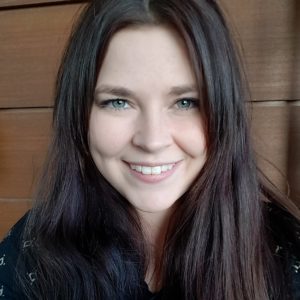
Poppy Woodhouse is a highly knowledgeable and experienced Lead Educator in the Early Years. She values the individual and recognises that all children are entitled to a caring and supportive environment to meet their needs and allow them to thrive, be inspired and to learn.
Lara Ronalds is an Australian EY to Gr. 6 play–based educator and PYP curriculum coordinator with experience nationally and internationally. She is passionate about student engagement and nurturing a love of learning, whilst always being accountable to the curriculum.
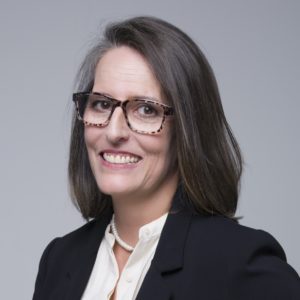

No comments yet.